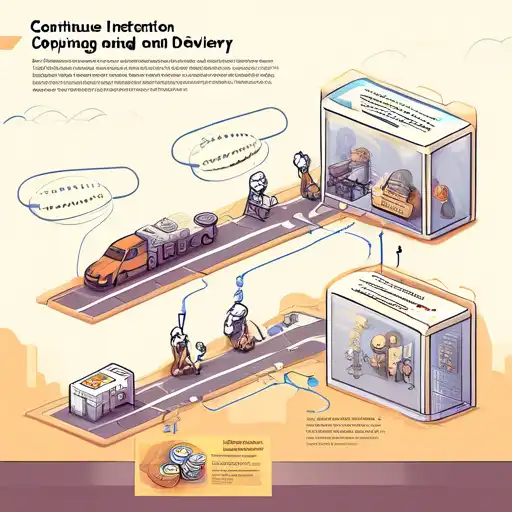What is Continuous Integration and Delivery?
Continuous Integration (CI) and Continuous Delivery (CD) are pivotal practices in the modern software development lifecycle, aimed at improving software quality and speeding up the release process. CI/CD automates the integration of code changes from multiple contributors into a single software project, ensuring that the software can be reliably released at any time.
The Core Principles of CI/CD
At its heart, CI/CD is about automating the software release process. Continuous Integration involves automatically testing and building code every time a team member commits changes to version control. Continuous Delivery extends this by ensuring that the code can be deployed to production at any time, with the push of a button.
Benefits of Implementing CI/CD
- Improved Code Quality: Automated testing catches bugs early in the development cycle.
- Faster Release Rate: Automation speeds up the process from development to deployment.
- Reduced Risks: Smaller, more frequent updates reduce the impact of any single change.
- Enhanced Team Productivity: Developers can focus on writing code without worrying about integration issues.
How to Implement CI/CD in Your Projects
Implementing CI/CD requires a cultural shift within teams, as well as the right tools. Start by integrating a version control system, then add automated testing and build processes. Tools like Jenkins, Travis CI, and CircleCI can automate these steps.
Choosing the Right Tools
Selecting the right CI/CD tools depends on your project's needs. Consider factors like integration capabilities, ease of use, and community support. For more insights, check out our guide on DevOps tools.
Best Practices for CI/CD
- Commit code changes frequently to avoid integration conflicts.
- Automate as much as possible, from testing to deployment.
- Monitor the CI/CD pipeline to quickly identify and fix issues.
- Ensure your team is trained and on board with CI/CD practices.
Challenges and Solutions in CI/CD
While CI/CD offers numerous benefits, teams may face challenges such as resistance to change, toolchain complexity, and maintaining test coverage. Overcoming these requires clear communication, ongoing education, and selecting scalable tools.
Future of CI/CD
The future of CI/CD lies in further automation, with AI and machine learning playing larger roles in predictive testing and deployment strategies. Staying ahead means continuously exploring new tools and practices.
For more detailed strategies on optimizing your CI/CD pipeline, visit our DevOps strategies page.
